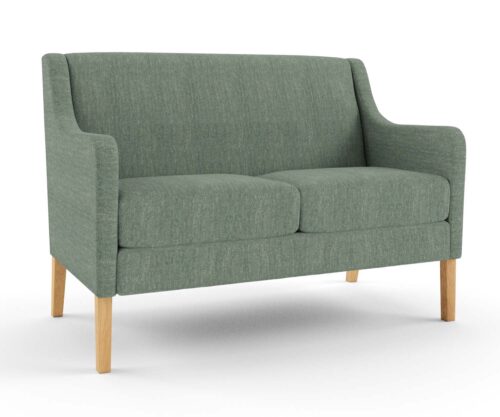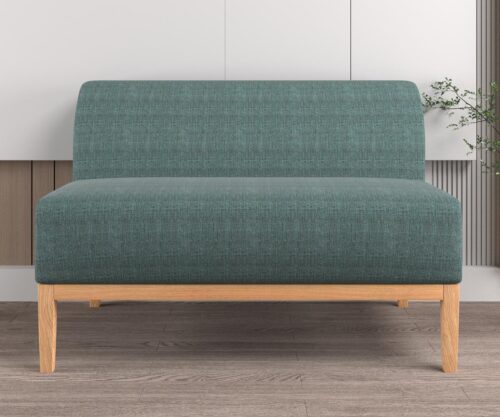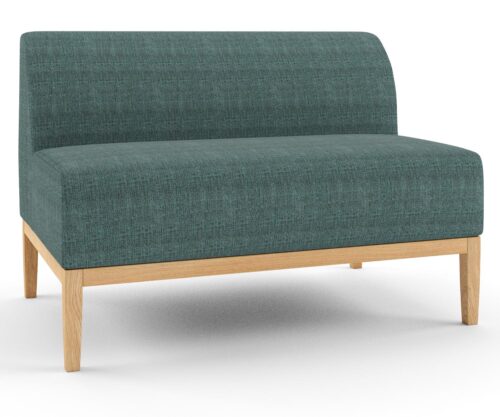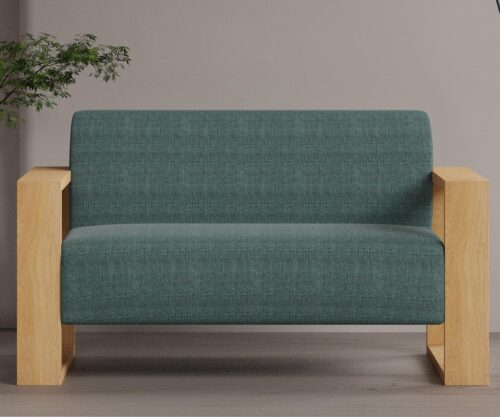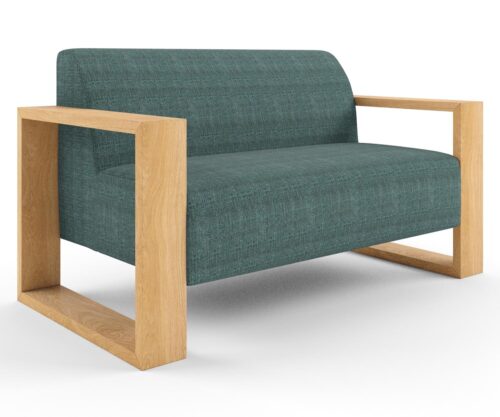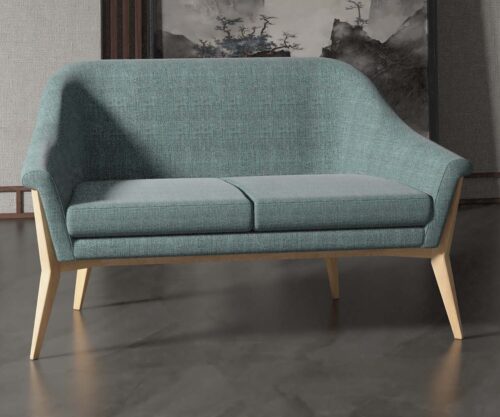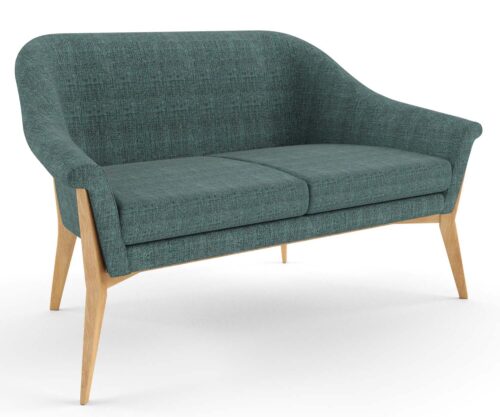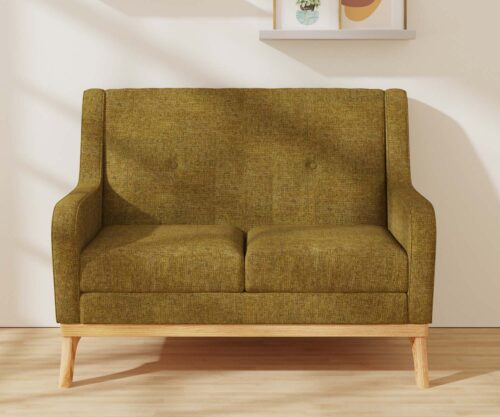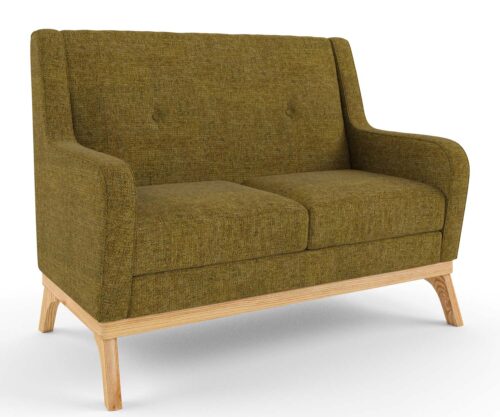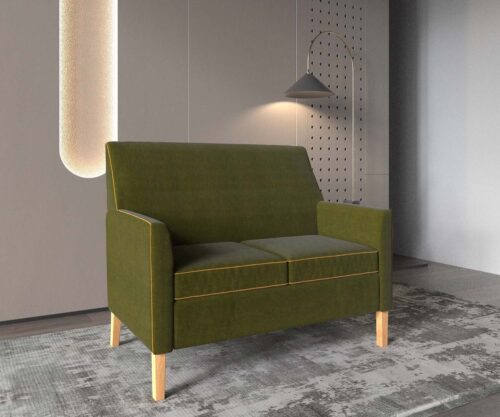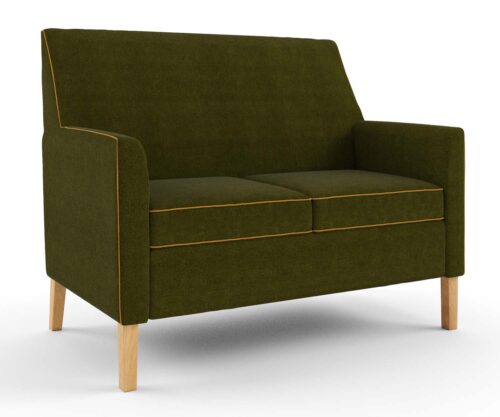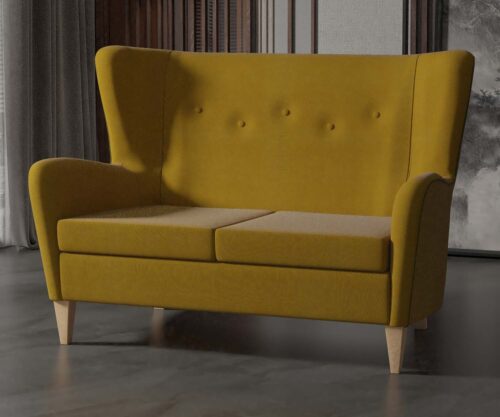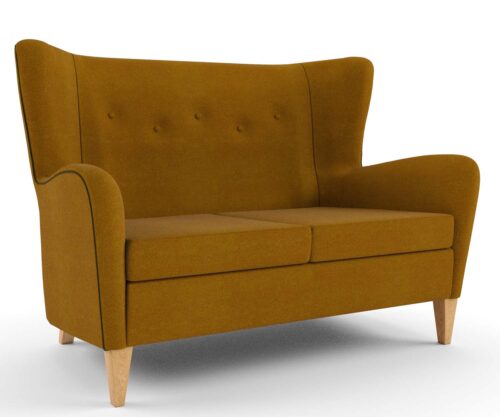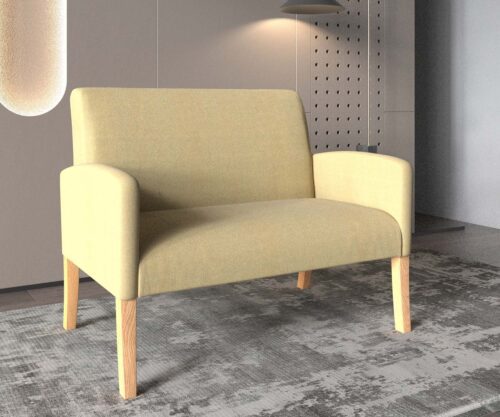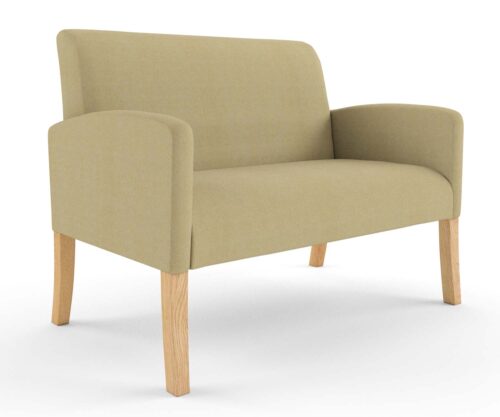Aged Care Upholstery: 5 Tips for Choosing Fabric to Keep Aged Care Furniture Clean
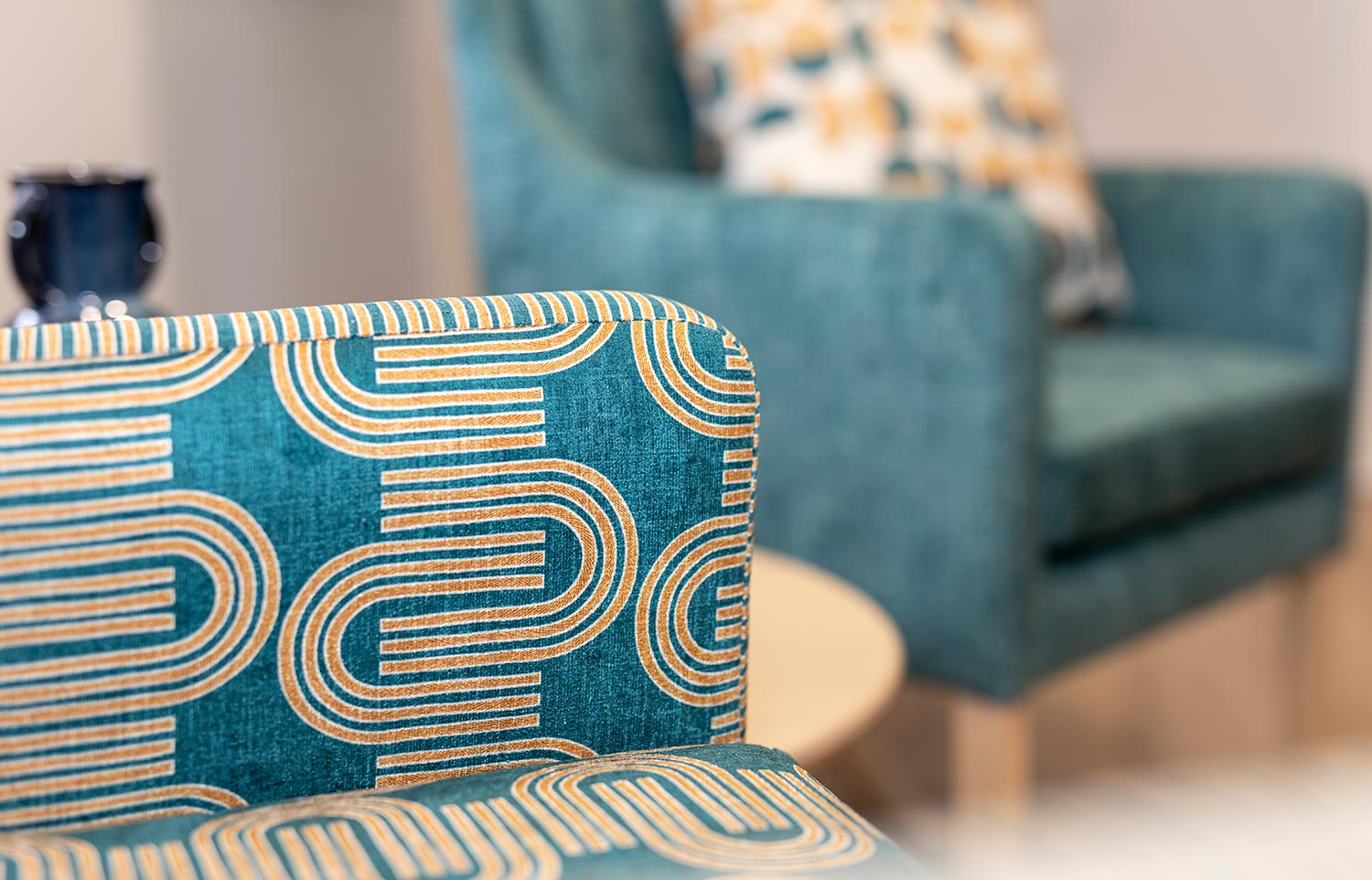
How do you choose the right aged care upholstery to help keep it clean?
It’s your job to refurbish the aged care facility you work at. The dining room chairs and living room furniture are looking particularly old and tired; they’ve certainly been scrubbed clean numerous times and even more so since the pandemic.
You’re considering your aged care furniture choices and looking at the available aged care upholstery fabric options. You may be wondering…
“Will this upholstery fabric stand up to the required aged care cleaning, and still look good?”
It’s an important decision because there are increased demands on aged care operators to maintain a hygienic environment for residents, staff and family. With this in mind, you want to support the vital job of the cleaning crew by providing aged care upholstery fabric that’s easy to clean. Making life easier for the cleaners has never been so important, with the benefits of this flowing through to the whole aged care community. Aged care cleaners are now more appreciated than ever and happy cleaners mean a cleaner aged care work environment for staff and a cleaner living environment for residents.
But the question remains: what should you look for when choosing aged care upholstery fabric so that furniture looks good and is easy to clean? Nobody wants aged care residents to be sitting on stained, worn and pilling furniture that might cause cross-contamination.
Here are 5 tips to help you choose the right aged care upholstery fabric…
Tip 1: When choosing aged care furniture for dining rooms, avoid upholstery fabrics that have a high pile.
You may be wondering: What is pile fabric? Within pile fabric, certain yarns stand up from the base fabric. In other words, they’re fabrics with a 3D texture, with visible fibers on the surface. Corduroy and velveteen are examples of pile fabrics.
High-pile fabrics may be chosen for furniture upholstery because they provide warmth and texture. However, they are also a challenge for aged care cleaning, particularly with dining room chairs, as it can be very difficult to get down into the pile to remove contaminates instead of just wiping over the surface which is what can be done on a flat pile or vinyl upholstery.
Tip 2: Choose upholstery fabrics with a better pilling grade
Pilling is the formation of fuzzy balls on the surface of a fabric. Upholstery fabric pilling occurs when fabric fibers rub together, such as when aged care residents sit on chairs. This causes the fibres to break off and accumulate in small piles, making chairs look worn and difficult to clean.
Any fabric can potentially pill, but how do you find out whether a fabric is more likely to pill or not? There are machines that test the pilling grade of a fabric and the fabric is graded according to the level of pilling that has occurred. When choosing an upholstery fabric, ask about the pilling grade of the fabric.
Tip 3: Look for a waterproof fabric.
As someone working in aged care, you know that upholstery fabrics must be waterproof, shielding against spills, liquids and stains to keep chairs clean and hygienic.
Furniture designers used to be restricted to using vinyl in aged care projects which, while functional, was not particularly attractive and this is important if you are trying to create a welcoming environment for aged care residents.
However, advances in waterproof fabric technology mean that furniture designers now have the creative freedom to strike the important balance between functionality and using colours, texture and patterns to create a warm, home-like aged care environment.
Look for waterproof fabrics that have a fully waterproof barrier applied to the back of the fabric and a water-repellant finish applied to the face of the fabric. This kind of fabric will also offer exceptional protection from stains, odours, moisture and mildew.
Tip 4: Choose an antimicrobial fabric.
In the wake of a global pandemic, the demand for antimicrobial fabric has never been greater. But what does antimicrobial actually mean and how long does it last? Antimicrobial products kill or slow the spread of micro-organisms such as bacteria, viruses and fungi.
Adding antimicrobials to upholstery fabrics offers a layer of protection, prolonging the life of the textile and protecting the fabric surface from microbes. The antimicrobial finishes are mill applied, durable and provide long-term antimicrobial performance, often lasting the life of the furniture upholstery.
Tip 5: And finally… it’s not fabric but it is part of the furniture: choose furniture that has had antimicrobial lacquer coating applied to the timber.
Stopping the spread of infection in aged care facilities has never been so important and in some furniture, the timber parts of a chair are major touch point areas where germs accumulate, increasing the risk of infection. Quality furniture manufacturers now protect all timber products by applying an antimicrobial lacquer which is a polyurethane coating containing an antimicrobial additive. This coating inhibits the growth of bacteria and reduces the level of cross-contamination, adding another tool to the aged care cleaning arsenal.
BONUS TIP:
While choosing the right upholstery fabric will assist the cleaning crew in their efforts to stop the spread of infection and keep your aged care facility clean, something else to watch out for is advancements in furniture design. Furniture designers who specialize in aged care furniture are constantly researching new ways to design furniture to make it easier to keep it clean. An example of this is incorporating removable parts which, when removed, are easier to clean on their own.
Aged care facilities are facing upholstery cleaning challenges that they have never had to face before and it’s important that the upholstery fabric stands up well to its level of use. Choosing the right upholstery fabric from the get-go can save aged care facilities (and their cleaners!) a lot of heartache and time, not to mention going a long way to assisting the budgets of aged care facilities.
FAQs About Keeping Aged Care Furniture Clean
What factors should be considered when choosing upholstery fabric for aged care furniture to maintain cleanliness?
Consider factors such as fabric durability, cleanability, resistance to stains, moisture repellency, and adherence to infection control standards when selecting upholstery for aged care furniture.
How does fabric durability contribute to maintaining cleanliness in aged care furniture?
Durable fabrics resist wear and tear, ensuring a longer lifespan for the upholstery. This helps maintain cleanliness by reducing the likelihood of tears, fraying, and other issues that can compromise hygiene.
What type of fabric is most resistant to stains for aged care furniture?
Fabrics with stain-resistant treatments or those made from performance materials like Crypton or Sunbrella are often more resistant to stains. Look for fabrics with easy-clean features that allow for quick removal of spills and stains.
How important is moisture repellency in upholstery fabric for aged care furniture?
Moisture repellency is crucial to prevent liquids from being absorbed into the fabric. Fabrics with moisture-repellent features are easier to clean and less prone to odors or the growth of mold and mildew.
Are there specific cleaning requirements for different types of upholstery fabrics in aged care settings?
Yes, different fabrics may have specific cleaning recommendations. Follow the manufacturer’s care instructions for each upholstery fabric to ensure proper cleaning and maintenance, and consider fabrics that are compatible with standard cleaning protocols in aged care facilities.
Can antimicrobial or antibacterial properties be found in upholstery fabrics for aged care furniture?
Yes, many upholstery fabrics designed for aged care furniture come with antimicrobial or antibacterial properties. These features help inhibit the growth of bacteria, reducing the risk of infections and contributing to a cleaner environment.
How does the choice of colour impact the cleanliness of aged care furniture upholstery?
Lighter colours may show stains more visibly, while darker colours can help camouflage dirt. Consider the facility’s cleaning protocols and the visual impact of different colours when selecting upholstery for aged care furniture.
What role does ease of cleaning play in choosing upholstery for aged care furniture?
Fabrics that are easy to clean simplify maintenance in aged care settings. Look for upholstery that allows for quick and efficient cleaning, whether through spot cleaning, professional cleaning, or other approved methods.
Can environmentally friendly and sustainable upholstery fabrics be suitable for aged care settings?
Yes, environmentally friendly and sustainable fabrics can be suitable for aged care settings. Look for options that meet both sustainability goals and the practical requirements of cleanliness and durability.
How can you balance aesthetics with the practicality of maintaining cleanliness when choosing upholstery for aged care furniture?
Seek upholstery fabrics that balance aesthetics with practicality. Consider options that offer both a pleasing visual appearance and meet the necessary standards for cleanliness and durability. This may involve consulting with design professionals experienced in aged care environments.
Each sofa featured below is covered in some of our favourite high performance upholstery fabrics
More News
Aged Care Upholstery: 5 Tips for Choosing Fabric to Keep Aged Care Furniture Clean

How do you choose the right aged care upholstery to help keep it clean?
It’s your job to refurbish the aged care facility you work at. The dining room chairs and living room furniture are looking particularly old and tired; they’ve certainly been scrubbed clean numerous times and even more so since the pandemic.
You’re considering your aged care furniture choices and looking at the available aged care upholstery fabric options. You may be wondering…
“Will this upholstery fabric stand up to the required aged care cleaning, and still look good?”
It’s an important decision because there are increased demands on aged care operators to maintain a hygienic environment for residents, staff and family. With this in mind, you want to support the vital job of the cleaning crew by providing aged care upholstery fabric that’s easy to clean. Making life easier for the cleaners has never been so important, with the benefits of this flowing through to the whole aged care community. Aged care cleaners are now more appreciated than ever and happy cleaners mean a cleaner aged care work environment for staff and a cleaner living environment for residents.
But the question remains: what should you look for when choosing aged care upholstery fabric so that furniture looks good and is easy to clean? Nobody wants aged care residents to be sitting on stained, worn and pilling furniture that might cause cross-contamination.
Here are 5 tips to help you choose the right aged care upholstery fabric…
Tip 1: When choosing aged care furniture for dining rooms, avoid upholstery fabrics that have a high pile.
You may be wondering: What is pile fabric? Within pile fabric, certain yarns stand up from the base fabric. In other words, they’re fabrics with a 3D texture, with visible fibers on the surface. Corduroy and velveteen are examples of pile fabrics.
High-pile fabrics may be chosen for furniture upholstery because they provide warmth and texture. However, they are also a challenge for aged care cleaning, particularly with dining room chairs, as it can be very difficult to get down into the pile to remove contaminates instead of just wiping over the surface which is what can be done on a flat pile or vinyl upholstery.
Tip 2: Choose upholstery fabrics with a better pilling grade
Pilling is the formation of fuzzy balls on the surface of a fabric. Upholstery fabric pilling occurs when fabric fibers rub together, such as when aged care residents sit on chairs. This causes the fibres to break off and accumulate in small piles, making chairs look worn and difficult to clean.
Any fabric can potentially pill, but how do you find out whether a fabric is more likely to pill or not? There are machines that test the pilling grade of a fabric and the fabric is graded according to the level of pilling that has occurred. When choosing an upholstery fabric, ask about the pilling grade of the fabric.
Tip 3: Look for a waterproof fabric.
As someone working in aged care, you know that upholstery fabrics must be waterproof, shielding against spills, liquids and stains to keep chairs clean and hygienic.
Furniture designers used to be restricted to using vinyl in aged care projects which, while functional, was not particularly attractive and this is important if you are trying to create a welcoming environment for aged care residents.
However, advances in waterproof fabric technology mean that furniture designers now have the creative freedom to strike the important balance between functionality and using colours, texture and patterns to create a warm, home-like aged care environment.
Look for waterproof fabrics that have a fully waterproof barrier applied to the back of the fabric and a water-repellant finish applied to the face of the fabric. This kind of fabric will also offer exceptional protection from stains, odours, moisture and mildew.
Tip 4: Choose an antimicrobial fabric.
In the wake of a global pandemic, the demand for antimicrobial fabric has never been greater. But what does antimicrobial actually mean and how long does it last? Antimicrobial products kill or slow the spread of micro-organisms such as bacteria, viruses and fungi.
Adding antimicrobials to upholstery fabrics offers a layer of protection, prolonging the life of the textile and protecting the fabric surface from microbes. The antimicrobial finishes are mill applied, durable and provide long-term antimicrobial performance, often lasting the life of the furniture upholstery.
Tip 5: And finally… it’s not fabric but it is part of the furniture: choose furniture that has had antimicrobial lacquer coating applied to the timber.
Stopping the spread of infection in aged care facilities has never been so important and in some furniture, the timber parts of a chair are major touch point areas where germs accumulate, increasing the risk of infection. Quality furniture manufacturers now protect all timber products by applying an antimicrobial lacquer which is a polyurethane coating containing an antimicrobial additive. This coating inhibits the growth of bacteria and reduces the level of cross-contamination, adding another tool to the aged care cleaning arsenal.
BONUS TIP:
While choosing the right upholstery fabric will assist the cleaning crew in their efforts to stop the spread of infection and keep your aged care facility clean, something else to watch out for is advancements in furniture design. Furniture designers who specialize in aged care furniture are constantly researching new ways to design furniture to make it easier to keep it clean. An example of this is incorporating removable parts which, when removed, are easier to clean on their own.
Aged care facilities are facing upholstery cleaning challenges that they have never had to face before and it’s important that the upholstery fabric stands up well to its level of use. Choosing the right upholstery fabric from the get-go can save aged care facilities (and their cleaners!) a lot of heartache and time, not to mention going a long way to assisting the budgets of aged care facilities.
FAQs About Keeping Aged Care Furniture Clean
What factors should be considered when choosing upholstery fabric for aged care furniture to maintain cleanliness?
Consider factors such as fabric durability, cleanability, resistance to stains, moisture repellency, and adherence to infection control standards when selecting upholstery for aged care furniture.
How does fabric durability contribute to maintaining cleanliness in aged care furniture?
Durable fabrics resist wear and tear, ensuring a longer lifespan for the upholstery. This helps maintain cleanliness by reducing the likelihood of tears, fraying, and other issues that can compromise hygiene.
What type of fabric is most resistant to stains for aged care furniture?
Fabrics with stain-resistant treatments or those made from performance materials like Crypton or Sunbrella are often more resistant to stains. Look for fabrics with easy-clean features that allow for quick removal of spills and stains.
How important is moisture repellency in upholstery fabric for aged care furniture?
Moisture repellency is crucial to prevent liquids from being absorbed into the fabric. Fabrics with moisture-repellent features are easier to clean and less prone to odors or the growth of mold and mildew.
Are there specific cleaning requirements for different types of upholstery fabrics in aged care settings?
Yes, different fabrics may have specific cleaning recommendations. Follow the manufacturer’s care instructions for each upholstery fabric to ensure proper cleaning and maintenance, and consider fabrics that are compatible with standard cleaning protocols in aged care facilities.
Can antimicrobial or antibacterial properties be found in upholstery fabrics for aged care furniture?
Yes, many upholstery fabrics designed for aged care furniture come with antimicrobial or antibacterial properties. These features help inhibit the growth of bacteria, reducing the risk of infections and contributing to a cleaner environment.
How does the choice of colour impact the cleanliness of aged care furniture upholstery?
Lighter colours may show stains more visibly, while darker colours can help camouflage dirt. Consider the facility’s cleaning protocols and the visual impact of different colours when selecting upholstery for aged care furniture.
What role does ease of cleaning play in choosing upholstery for aged care furniture?
Fabrics that are easy to clean simplify maintenance in aged care settings. Look for upholstery that allows for quick and efficient cleaning, whether through spot cleaning, professional cleaning, or other approved methods.
Can environmentally friendly and sustainable upholstery fabrics be suitable for aged care settings?
Yes, environmentally friendly and sustainable fabrics can be suitable for aged care settings. Look for options that meet both sustainability goals and the practical requirements of cleanliness and durability.
How can you balance aesthetics with the practicality of maintaining cleanliness when choosing upholstery for aged care furniture?
Seek upholstery fabrics that balance aesthetics with practicality. Consider options that offer both a pleasing visual appearance and meet the necessary standards for cleanliness and durability. This may involve consulting with design professionals experienced in aged care environments.
Each sofa featured below is covered in some of our favourite high performance upholstery fabrics
Commercial furniture by room
Based in Brisbane, we’re an Australian manufacturer of health and aged care furniture, retirement living furniture, hotel and accommodation furniture and student accommodation furniture. We also supply a range of commercial office furniture.
Is your commercial furniture built to last?
Not sure? Get your Furniture Quality Checklist today.
Discover what you need to know before purchasing commercial furniture. Confidently order furniture without compromising on quality, style, and the comfort and safety of your clients.
PLUS, sign up for Retirement Living and Aged Care Industry News.


